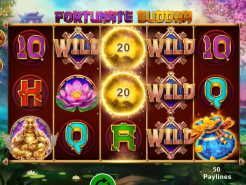Snowboard Riding Made Enjoyable
Snowboard is a winter sports recreational tool which, gliding on snow, provides thrill, physical exercise, fun and entertainment to the players. Equally, it keeps the onlookers also engaged mentally. Snowboard is different from monoskiing. Snowboard involves standing with feet perpendicular to the length of the board, while in monoskiing, the player stands with feet in the direction of moving. Snowboard tips are most useful for choosing the correct size and for playing. Players use extra fittings such as special boots and bindings in competitions to keep themselves secure.
The origin: Vern, a 13-year old of Minnesota, first designed this snowboard, then called "bunker," in 1939. Later, in 1965, taking cue from water ski board and as a Winter entertainment for his children, Sherman Poppen of Muskegon followed it up with the modern snowboard naming it Snurfer (a portmanteau of snow and surfer). Today, it has undergone many modifications bringing increased comfort and safety. Over time, the snowboard spread to France and other countries occupying a prime place. A snowboard today costs higher than $600 inclusive of boots and bindings.
Types: Snowboard appears in varied shapes and sizes catering to differing snow conditions and riding techniques adopted. Some are:
Youth size, which is shorter measuring 35 inches, is used as snowboard for beginners or children. Besides, this shorter type proves ideal as a snowboard for tricks and other special purposes while playing in snow parks in freestyle skiers.
Freestyle: This is shorter, and fit for playing in pipes and parks with various terrains, having medium to soft flex, twin-tip shape for bothways- riding, and deep sidecuts for easy turnings.
Freeride: Medium to stiff flex, this is longer than freestyle and park types, and usable typically directional even under extreme mountain slopes with groomed or powdery snow.
All mountain: A hybrid of freestyle and freeride types, very commonly in use, this is twin-tip, but with more flex at the front.
Dual snowboards: Two boards, one for each foot, this facilitates performing snowboard tricks easily.
Splitboard: A snowboard which separates into halves lengthwise with facility for the bindings to connect with hinges. This in turn ensures longitudinal alignment for backcountry skiing. Once, over, the two parts can again be put back for making the usual sliding.
Powder: This is only directional, with a wider tip, rockered nose and reducing shape.
Alpine or racing: Coming with long, sturdy directional shape, fitted with tough plastic snowboard boots or soft boots, this is most popular for races on groomed ice surface.
You can enjoy the games if you choose the proper type, following the snowboard tips.

